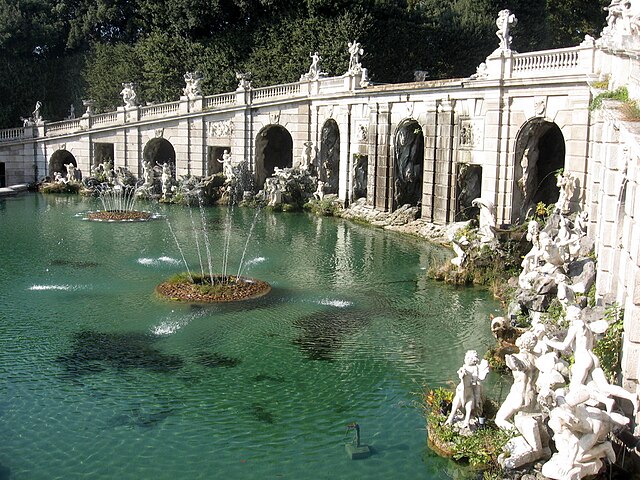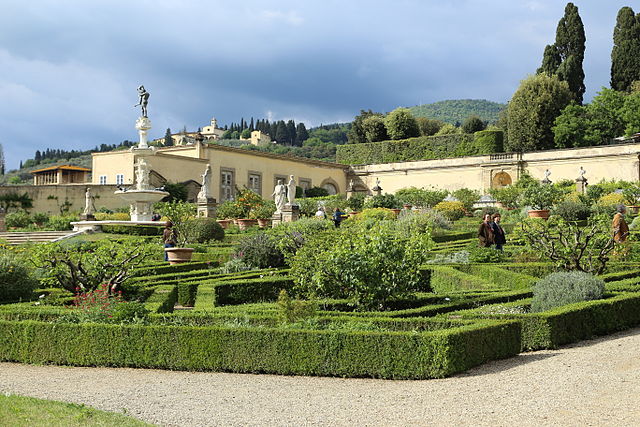The Boboli Gardens is a historical park of the city of Florence that was opened to the public in 1766. Originally designed for the Medici, it represents one of the first and most important examples of the Italian garden, which later served as inspiration for many European courts. The large green area is a real open-air museum with statues of various styles and periods, ancient and Renaissance that are distributed throughout the garden. It also has large fountains and caves, among them the splendid Buontalenti grotto built by the artist, architect, and sculptor Bernardo Buontalenti between 1536 and 1608.
The main axis through the anfiteatro centered on Palazzo Pitti
Image: Boboli pianta antica
Boboli Gardens Amphitheatre, viewed from the Palazzo Pitti
Bathing Venus by Giambologna as seen in the third chamber of the Buontalenti Grotto
Italian garden typically refers to a style of gardens, wherever located, reflecting a number of large Italian Renaissance gardens which have survived in something like their original form. In the history of gardening, during the Renaissance, Italy had the most advanced and admired gardens in Europe, which greatly influenced other countries, especially the French formal garden and Dutch gardens and, mostly through these, gardens in Britain.
Garden of Villa d'Este
Statues in the gardens of the Palace of Caserta
Reconstruction of the garden of the House of the Vettii in Pompeii
Fountain of Heracles and Antaeus in the gardens of the Villa di Castello, Florence








